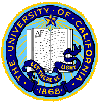 |
Scott Jordan | |
|
|
Several broadband Internet access service providers in the United States have introduced programs under which specific network traffic is excluded from end users’ data caps or otherwise treated differently from other traffic under a usage-based pricing policy. Such practices are often referred to as “zero-rating.” Such practices are sometimes accompanied by network practices that throttle, or exempt from throttling, the zero-rated network traffic. Zero-rating practices and associated throttling practices have been an issue of intense public policy debate.
We attempt here to evaluate various categories of zero-rating and associated throttling practices under the FCC's 2015 Open Internet Order. We consider discrimination, end-user control, and broadband provider competition; edge provider competition; congestion, network capacity, and broadband provider investment; edge provider innovation; and consumer surplus.
For each category of zero-rating and associated throttling practices, we discuss the potential challenges of requirements to publicly disclose accurate information about traffic that is zero-rated and/or throttled and the likely effects of any throttling practice. We then examine which such practices may qualify as reasonable network management. We find that some associated throttling practices should be prohibited due to the application-specific nature of them. We find that application-agnostic zero-rating practices should be allowed if and only if they are reasonable and not unreasonably discriminatory; that class-based zero-rating practices should be evaluated by comparing the harm from application-specificity to competitive harms and benefits; that edge provider-based zero-rating should likely be prohibited due to the amount of application-specificity and anticompetitive effects; and that affiliated zero-rating should likely be allowed if and only if there is a reasonable and not unreasonably discriminatory underlying zero-rating practice.
We apply this analysis to four types of recent zero-rating practices: sponsored data programs (including AT&T Sponsored Data and Verizon FreeBee Data), zero-rating and throttling of video streaming (including T-Mobile Binge On), free mobile Internet access to specific edge providers (including T-Mobile Music Freedom), and zero-rated or unlimited access to affiliated content (including AT&T Data Free TV, Verizon go90, and Comcast XFINITY Stream TV).
This paper is intended for people with a background in communications policy:
Evaluating Zero-Rating and Associated Throttling Practices Under the Open Internet Order, Journal of Information Policy, vol. 7, 2017, pp. 450-507.
Portions of this work were supported by NSF. Any opinions, findings, conclusions or recommendations expressed in this material are those of the author(s) and do not necessarily reflect the views of the National Science Foundation or IEEE. This material is presented to ensure timely dissemination of scholarly and technical work. Copyright and all rights therein are retained by authors or by other copyright holders. All persons copying this information are expected to adhere to the terms and constraints invoked by each author's copyright. One print or electronic copy may be made for personal use only. Permission must be obtained from the copyright holder for systematic or multiple reproduction, distribution to multiple locations via electronic or other means, duplication of any material in these papers for a fee or for commercial purposes, modification of the content of these papers, reprinting or republishing of this material for advertising or promotional purposes or for creating new collective works for resale or redistribution to servers or lists, and to reuse any copyrighted component of this work in other works.